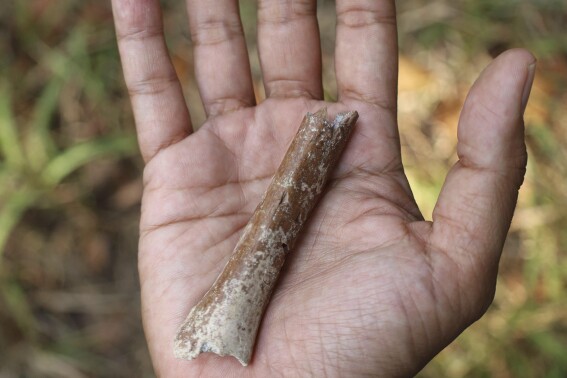Support truly
independent journalism
Support Now
Our mission is to deliver unbiased, fact-based reporting that holds power to account and exposes the truth.
Whether $5 or $50, every contribution counts.
Support us to deliver journalism without an agenda.

Louise Thomas
Editor
Scientists have found what they believe to be the smallest adult arm bone on record, shedding light on a group of mysterious “Hobbit” humans that lived thousands of years ago.
The “astonishingly small” limb was found on the island of Flores in Indonesia, along with two teeth fossils.
Analysis suggests the remnants belonged to diminutive individuals even smaller than Homo floresiensis – enigmatic human species named after fantasy author JRR Tolkien’s fictional race of people in Lord of the Rings.
Remains of H. floresiensis were first unearthed in 2003 in a remote cave in Flores. At around 106cm tall, these ancient human species were slight in stature, but over the past two decades, they have attracted lengthy debates because of their mysterious origins.
The researchers now believe these small-bodied people may have been early relatives of H. floresiensis, who were wiped about around 50,000 years ago around the time when modern humans (Homo sapiens) began to arrive in Asia.

An examination of the upper arm bone fragment suggests these ancient humans would have been around 6cm shorter than H. floresiensis, the researchers said.
The team also thinks the so-called Hobbits may have descended from another extinct human species known as Homo erectus – often thought of as a direct ancestor of modern humans.

Professor Adam Brumm, from Griffith University’s Australian Research Centre for Human Evolution, said: “The evolutionary history of the Flores hominins (human relatives) is still largely unknown.
“However, the new fossils strongly suggest that the ‘Hobbit’ story did indeed begin when a group of the early Asian hominins known as Homo erectus somehow became isolated on this remote Indonesian island, perhaps one million years ago, and underwent a dramatic body size reduction over time.”
For the study, published in the journal Nature Communications, the researchers analysed the new fossils discovered in Mata Menge, an open-air site not far from where the H. floresiensis remains were found.

Yousuke Kaifu, of the University of Tokyo in Japan, said: “When I first saw the small humerus (upper arm bone), I thought it was a child’s bone, but I became curious and was surprised when I looked up its developmental stage.
“The task of estimating the age and length was difficult, but through collaboration with my co-researchers, we were able to solve the problems to produce these results.”
The two teeth from Mata Menge are also small in size, the researchers said, with one bearing features consistent with the early H. erectus in remains found in the nearby island of Java.

Professor Brumm said: “This 700,000-year-old adult humerus is not just shorter than that of Homo floresiensis, it is the smallest upper arm bone known from the hominin fossil record worldwide.
“This very rare specimen confirms our hypothesis that the ancestors of Homo floresiensis were extremely small in body size; however, it is now apparent from the tiny proportions of this limb bone that the early progenitors of the ‘Hobbit’ were even smaller than we had previously thought.”
Commenting on the study, Dr Mark Grabowski, a senior lecturer in evolutionary anthropology at Liverpool John Moores University, who was not involved, said that if the dates and age estimate of the fossils are accurate, the findings may “appear to seal the fate of pathological explanations of Homo floresiensis”.
Disclaimer: The copyright of this article belongs to the original author. Reposting this article is solely for the purpose of information dissemination and does not constitute any investment advice. If there is any infringement, please contact us immediately. We will make corrections or deletions as necessary. Thank you.



